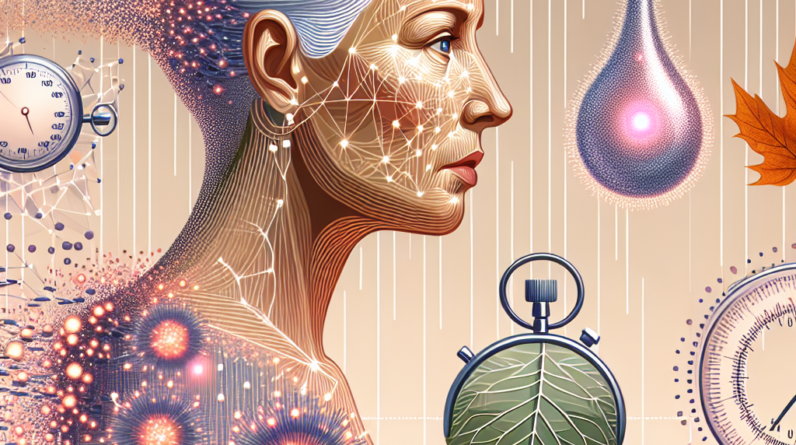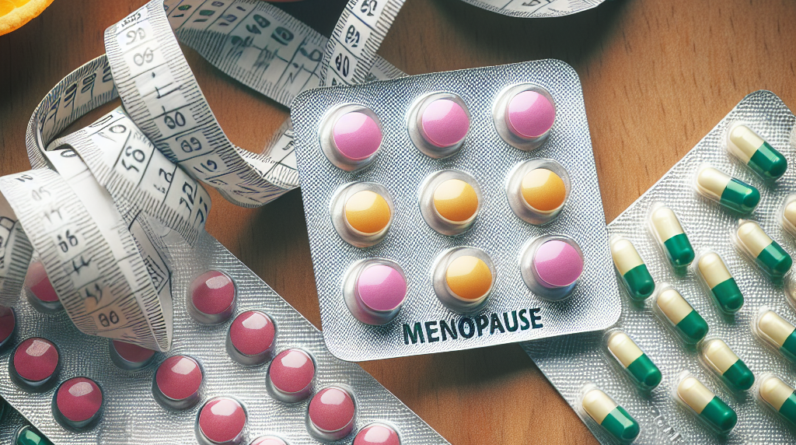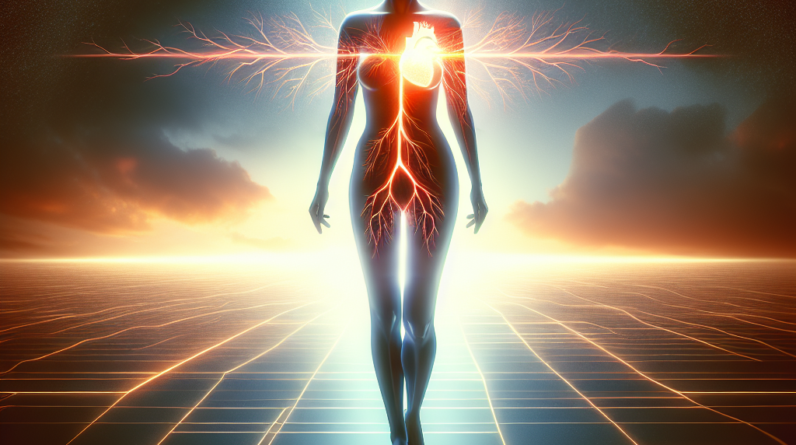
Menopause is a natural phase that every woman experiences at some point in her life. It brings with it a myriad of changes, both physical and emotional. One particularly bothersome symptom that may arise during this time is dry eye. As hormone levels fluctuate, the eyes may become drier and more prone to irritation. So, if you’re a woman going through menopause and finding yourself reaching for eye drops more often than not, fret not, because in this article, we will explore some effective ways to alleviate the discomfort caused by this common menopausal issue.
Understanding Menopause
Menopause is a natural biological process that occurs in women as they age. It marks the end of a woman’s reproductive years and is characterized by the cessation of menstruation for a period of 12 consecutive months. This transitional phase usually occurs between the ages of 45 and 55, with the average age of onset being around 51. However, the timing can vary from woman to woman.
During menopause, the ovaries gradually produce less estrogen and progesterone, the hormones responsible for regulating the menstrual cycle. This hormonal shift can bring about a wide range of physical and emotional changes in women, known as menopausal symptoms.
Symptoms of Menopause
Menopause is often accompanied by several symptoms that can vary in severity and duration for each individual. Some of the most common symptoms include hot flashes, night sweats, irregular periods, mood swings, vaginal dryness, decreased libido, fatigue, sleep disturbances, weight gain, and urinary problems.
Estrogen plays a crucial role in maintaining the health of various body systems, including the cardiovascular, musculoskeletal, and central nervous systems. Therefore, its decline during menopause can have a significant impact on women’s overall health.
Impact of Menopause on Women’s Health
The decline in estrogen levels during menopause can lead to various health challenges and increased risks. Women going through menopause are at a higher risk of developing conditions such as osteoporosis, heart disease, stroke, and certain types of cancer. Additionally, menopause can also affect the health of the eyes, leading to conditions such as dry eye.

Dry Eye and Its Causes
Dry eye, also known as dry eye syndrome or keratoconjunctivitis sicca, is a common ocular condition characterized by insufficient tear production or poor tear quality. Tears are crucial for maintaining the health and lubrication of the eyes, and any disruption in their normal production can lead to discomfort and visual disturbances.
Several factors can contribute to the development of dry eye, including aging, environmental conditions, certain medications, medical conditions such as autoimmune disorders, and hormonal changes.
Role of Hormonal Changes in Dry Eye
Hormonal changes play a significant role in the development of dry eye, especially during menopause. The decline in estrogen levels can directly affect the function of the lacrimal glands, which are responsible for tear production. Estrogen has been shown to have a protective effect on the ocular surface, promoting the production of tears and maintaining their quality. Therefore, the hormonal imbalance during menopause can disrupt the delicate balance of tear production and lead to dry eye symptoms.
Link Between Menopause and Dry Eye
Dry eye is a prevalent condition among menopausal women, with studies suggesting that up to 61% of women experience dry eye symptoms during menopause. The hormonal changes that occur during menopause, particularly the decline in estrogen, contribute to the development and worsening of dry eye symptoms.

Hormonal Factors Contributing to Dry Eye
The decline in estrogen levels during menopause can directly affect the production and composition of tears. Estrogen has been found to stimulate tear gland function and promote the production of tears with the appropriate balance of water, oil, and mucus. Reduced estrogen levels can lead to decreased tear production and an imbalance in tear composition, resulting in dry eye symptoms.
Effects of Estrogen Decline on Tear Production
Estrogen plays a vital role in maintaining the health and function of the lacrimal glands, which produce tears. The decline in estrogen levels during menopause can lead to a decrease in tear production, resulting in dry and irritated eyes. Additionally, estrogen deficiency can also affect the function of other glands, such as the meibomian glands, which produce the oily component of tears. This can further exacerbate tear evaporation and contribute to dry eye symptoms.
Symptoms of Dry Eye in Menopausal Women
Dry eye can manifest in various ways and may vary in severity among menopausal women. Some common symptoms include persistent dryness and irritation of the eyes, a burning or stinging sensation, a feeling of having a foreign body in the eye, and excessive tearing as a reflex response to the dryness.
It is essential to be aware of these symptoms and seek appropriate management to alleviate discomfort and maintain ocular health.
Risk Factors for Dry Eye in Menopausal Women
Various risk factors can increase the likelihood of experiencing dry eye symptoms during menopause. These include advanced age, smoking, certain medications such as antihistamines and decongestants, pre-existing medical conditions like autoimmune disorders and diabetes, and environmental factors such as low humidity and prolonged screen time.
By understanding these risk factors, women can proactively take steps to minimize their chances of developing dry eye symptoms.
The Impact of Dry Eye on Quality of Life
Dry eye can significantly impact a menopausal woman’s quality of life. The discomfort and visual disturbances caused by dry eye can interfere with daily activities such as reading, driving, and working on electronic devices. The chronic nature of dry eye can also lead to psychological effects such as frustration, anxiety, and reduced self-esteem. Additionally, sleep disturbances resulting from nocturnal dryness and discomfort can further exacerbate the daytime symptoms.
Diagnosing Dry Eye in Menopausal Women
Diagnosing dry eye involves an evaluation of symptoms, clinical examination, and specific tests to assess tear production, tear quality, and the health of the ocular surface. An eye care professional will inquire about the nature and duration of symptoms, perform a thorough examination of the eyes, and conduct specialized tests such as tear film and ocular surface tests, as well as meibomian gland assessments.
Early diagnosis is crucial in managing dry eye and preventing further complications.
Treatment Options for Dry Eye
The treatment of dry eye aims to alleviate symptoms, improve tear production and quality, and protect the ocular surface. Several treatment options are available, and the choice of treatment depends on the severity and underlying causes of dry eye. Some common treatment options include:
-
Artificial tears and lubricating eye drops: These over-the-counter products can provide temporary relief by lubricating the eyes and supplementing natural tear production.
-
Prescription medications: In some cases, prescription medications such as anti-inflammatory eye drops or medications that promote tear production may be prescribed to manage dry eye symptoms.
-
Lifestyle changes: Simple modifications to daily habits, such as taking regular breaks from electronic devices, adopting proper blinking techniques, and using humidifiers, can improve the symptoms of dry eye.
-
Environmental modifications: Making adjustments in the environment, such as increasing humidity levels, reducing exposure to allergens and irritants, and wearing protective eyewear in windy or dry conditions can help alleviate dry eye symptoms.
-
In-office procedures: Advanced treatments like meibomian gland expression, intense pulsed light therapy, and punctal plugs may be recommended by eye care professionals for more severe cases of dry eye.
Managing Dry Eye Symptoms during Menopause
Managing dry eye symptoms during menopause requires a holistic approach that takes into consideration both hormonal factors and general eye care practices. Some strategies that can help alleviate dry eye symptoms include:
-
Hormone Replacement Therapy: In certain cases, hormone replacement therapy (HRT) may be considered to address the underlying hormonal imbalances associated with menopause. This can help improve tear production and alleviate dry eye symptoms.
-
Heat Compresses for Meibomian Gland Dysfunction: Warm compresses applied to the eyelids can help unclog and improve the function of the meibomian glands, which produce the oily component of tears. This can enhance tear lubrication and reduce dryness.
-
Utilizing Humidifiers: Increasing the humidity levels in the environment, especially in dry climates or air-conditioned spaces, can help alleviate dry eye symptoms by preventing excessive tear evaporation.
-
Avoiding Triggers and Irritants: Identifying and avoiding common triggers such as smoke, allergens, windy conditions, and prolonged screen time can reduce the likelihood of developing or exacerbating dry eye symptoms.
-
Regular Eye Exams: Routine eye exams are crucial for monitoring eye health and detecting any changes or complications related to dry eye. This allows for timely intervention and management to prevent further progression of the condition.
Prevention and Self-Care for Menopausal Women
Preventing dry eye and maintaining overall ocular health during menopause involves adopting healthy habits and practicing proper eye care. Some preventive measures and self-care strategies include:
-
Maintaining a Healthy Lifestyle: Engaging in regular exercise, maintaining a balanced diet, and managing stress levels can promote overall well-being, including ocular health.
-
Proper Eye Hygiene: Practicing good eye hygiene, such as avoiding touching the eyes with dirty hands, removing eye makeup before bed, and cleaning contact lenses properly, can minimize the risk of eye infections and maintain a healthy ocular surface.
-
Protective Eyewear: Wearing appropriate protective eyewear, such as sunglasses with UV protection or goggles in dusty or windy conditions, can shield the eyes from external irritants and help preserve tear integrity.
-
Balanced Diet and Hydration: Consuming a diet rich in omega-3 fatty acids, vitamins A, C, and E, and staying adequately hydrated can promote healthy tear production and maintain ocular health.
-
Avoiding Dry Environments: When possible, avoiding environments with low humidity or excessive air conditioning can help prevent dry eye symptoms. Using a humidifier can be beneficial in such situations.
By implementing these preventive measures and following good eye care practices, menopausal women can minimize the risk of developing dry eye and ensure optimal eye health during this transitionary phase of life.
In conclusion, understanding the link between menopause and dry eye is vital for women going through this natural phase. The hormonal changes associated with menopause can significantly impact tear production and ocular health, leading to dry eye symptoms. Recognizing the symptoms, managing risk factors, seeking appropriate diagnosis and treatment, and adopting preventive measures are essential for maintaining eye comfort and overall well-being during menopause. Through proper care and attention, women can navigate menopause with ease and minimize the impact of dry eye on their daily lives.







